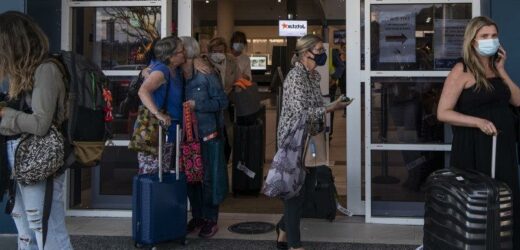Australia will welcome 174,000 fewer migrants than it expected just six months ago and the nation’s borders are likely to remain shut until the second half of next year.
The federal budget reveals the government expects a net 96,600 Australians to leave the country this financial year followed by an exodus of another 77,400 in 2021-22.
This is substantially higher than the net 93,200 who the government anticipated leaving over the same two years in the October federal budget.
This is due to the government pushing back by a year its expectations for permanent migrants and international students to begin gradually returning from mid-2022, with small pilot programs for students expected to commence later this year. In the 2020 budget the government was hopeful of reopening the border from the middle of this year.
“The rate of international arrivals will continue to be constrained by state and territory quarantine caps over 2021 and the first half of 2022, with the exception of passengers from safe travel zones,” the budget states.
“Inbound and outbound international travel is expected to remain low through to mid-2022, after which a gradual recovery in international tourism is assumed to occur.”
Despite the government expecting 174,000 residents to leave the country over this financial year and next, the budget has maintained the assumption that 160,000 migrants will enter Australia. The government says it will prioritise processing visas for thousands of people trapped outside the country whose partners are already in Australia.
The slowdown in migration is having a broader impact on the nation’s expected population.
The expected number of Australians living in the nation in 2023 has been cut by 41,000 – roughly the size of the NSW country city of Dubbo – from what the Treasury was expecting in the October budget. Those figures had been already heavily downgraded from long-term optimistic assumptions from Treasury.
Most of the downgrade in the population is in NSW, with Treasury expecting the state to lose a net 20,000 people or more every year to other states and territories until 2023-24. Instead of losing residents, Victoria is forecast to attract people from other parts of the country over the next four years. Australians are also expected to live a little longer than had been expected in the October budget.
The average lifespan for a female child born in 2024-25 is expected to be 85.9 years while for a male child they can expect to live 82.1 years.
Start your day informed
Our Morning Edition newsletter is a curated guide to the most important and interesting stories, analysis and insights. Get it delivered to your inbox.
Most Viewed in Politics
From our partners
Source: Read Full Article

